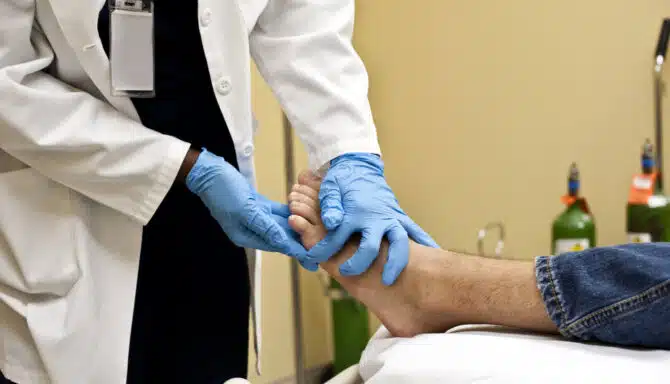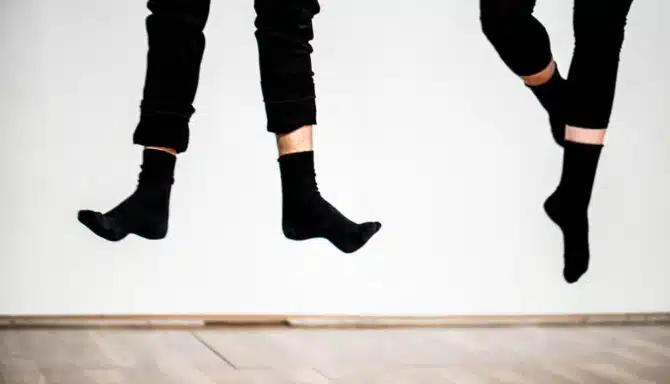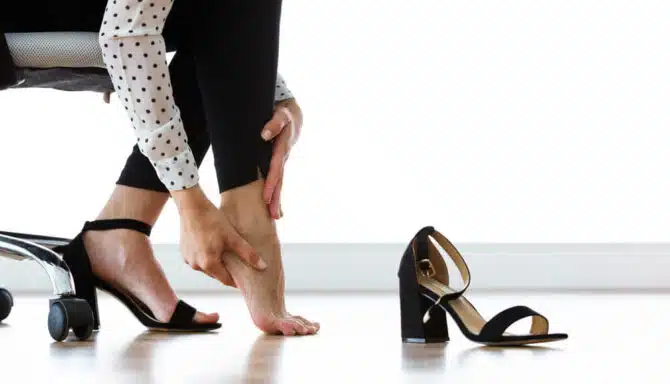As the workforce goes increasingly remote, Canadians are sitting more than ever. For those who work office jobs, long hours in a chair in front of a computer is commonplace. On the one hand, working an office job means you’re likely commuting, either by foot, bike, transit or by car. At least with commuting, you’re moving in one way or another. At home, you can go an entire day without reaching 500-1000 steps. The long-term effects of sitting can be real, and serious. The remote work trend may continue too. In fact, two-thirds of Canadians who currently work from home expect the trend to continue, according to research by the Angus Reid Institute. Whether that will actually occur or not is another question.
According to Statistics Canada, Canadians are sedentary for, on average, 10 hours per day. (This number grows as we age too.) Statistics Canada also cites a study from 2010 stating that “research has shown that physical inactivity or sedentary time is associated with higher risk for chronic conditions such as obesity, diabetes, and cancer independent of physical activity levels.” Regardless of the workplace, there’s no doubt about it: people sit for long periods of time. Combine sitting at work with sitting elsewhere: on your commute, when you’re eating, or relaxing on the couch. It wouldn’t be a shock for some people to say they spend more hours in a day sitting than in any other position. Sitting for prolonged periods of time can have several of effects on our body. The effects extend to our feet and legs too.
Common Foot Conditions Associated With Sitting
It’s important to start off by saying that foot conditions can arise from sitting, or they can arise from the opposite: being on your feet all day. Regardless of your line of work, your Job Affects Your Feet in different ways. Remember: a balanced approach to foot care, and spending 5-10 minutes each day with some self-care will go a long way. At Feet First Clinic in Toronto, we can help you with a plan of preventative care, and can help you with whatever foot pain or discomfort you experience.
Below you’ll find a list of foot conditions linked to sitting for long periods of time.
Deep Vein Thrombosis (DVT)
Deep vein thrombosis (DVT) occurs when a blood clot forms in a deep vein in your legs. DVT can cause leg pain or swelling. Especially when sitting, blood pools in your legs, and blood flow lessens. This can lead to blood clots as your blood isn’t entering and exiting your lower extremities as quickly.
Edema
Edema is the medical term for swelling. Have you ever noticed that your legs are more swollen later in the day, especially because of sitting? Edema occurs when your blood vessels leak fluid into nearby tissues. There are some related conditions including lymphedema, peripheral edema, and pedal edema, all of which are variations of swelling.
Varicose Veins
Varicose Veins are swollen, twisted veins that are typically visible just below the surface of the skin. The actual cause is weak or damaged vein walls and valves. Beyond visible signs, there several symptoms of varicose veins. These include: bulging, bluish veins; swelling; aching pain; a feeling of heaviness in the legs and feet; itching; changes in skin color; and nighttime leg cramps. Those who sit for long periods of time may be at an increased risk of developing varicose veins in their legs.
Chronic Venous Insufficiency
Chronic venous insufficiency (CVI) occurs when your veins are unable to properly transport blood back to your heart. This inability causes swelling and blood to pool in your legs. Valve damage may occur as a result of sitting for extended periods of time, and from general inactivity. This is largely due to the valves being weakened, and blood pressure rising to compensate. CVI occurs more in those aged 50 and over, and it’s more common in women than in men.
Does it Matter how I Sit?
The most popular perception around sitting is sitting cross-legged. Although varicose veins can form due to heightened blood pressure, it’s not because of sitting. In fact, the effects of sitting don’t extend to causing varicose veins. That’s a myth, says one doctor.
“Crossing your legs does not cause varicose veins. They result from an intrinsic problem with the veins themselves. Standing for long periods of time is another habit that has been questioned as a cause of varicose veins. In truth, standing may exacerbate existing problem with veins but should not cause them.”
Additionally, how you sit can affect other parts of your body including your neck, back, shoulders, and arms. Although not directly connected, poor posture can lead to problems in your legs and feet. You should also be cognizant of how your feet are planted on the floor. Aim to have flat feet, with weight distributed evenly, instead of putting undue pressure on the outside or inside of your feet. This is particularly important if you suffer from conditions like hallux limitus, hallux rigidus, or bunions.
How to Reduce the Effects of Sitting
Take the following precautions and incorporate a few of these tips into your routine to reduce the long-term effects of sitting.
- Proper footwear: Even when we’re sitting we put pressure on our feet. Invest in proper footwear and avoid high heels when possible if you know you’ll be sitting for 8-10 hours. Even if you keep a pair of sneakers under your desk, you can easily swap in and out of various footwear. (If your workplace has a dress code, for example.) Here at Feet First Clinic, we carry top-of-the-line Orthopedic Footwear, and can Properly Fit You to a pair of shoes that fits your body’s needs.
- Compression socks: Compression Socks can help with blood flow, and can help reduce swelling in your legs.
- Get up and move: Set a timer, or only fill up your water bottle halfway as an excuse to get up and walk around every hour. Try to sprinkle in physical activity throughout the day to break up long periods of sedentary (in)activity.
- Proper chair: No more sitting on your couch or a kitchen chair all day for work. Invest in a proper ergonomic chair and your entire body will thank you. In many cases of foot conditions, the problem stems from other parts of our body. We only feel pain in our legs, but the source of the problem is elsewhere. Address the condition, not the symptom.
- Use a standing desk: The advice here would be to use a standing desk. But, not just a standing desk. Swap in and out of using a sitting desk, and a standing desk for a more balanced lifestyle. If you don’t have room or access to a standing desk, consider taking some of your calls while standing up or while out for a walk.
Your Foot Care Solutions Live Here!
All under one roof! Our team handles any and all your foot health concerns. From mild, to critical, we cover all sides of the foot needs spectrum. Call us to ask about actionable steps towards your solution today!
Call us at 416-769-3338 or Click Above to Book Your Assessment Today!












